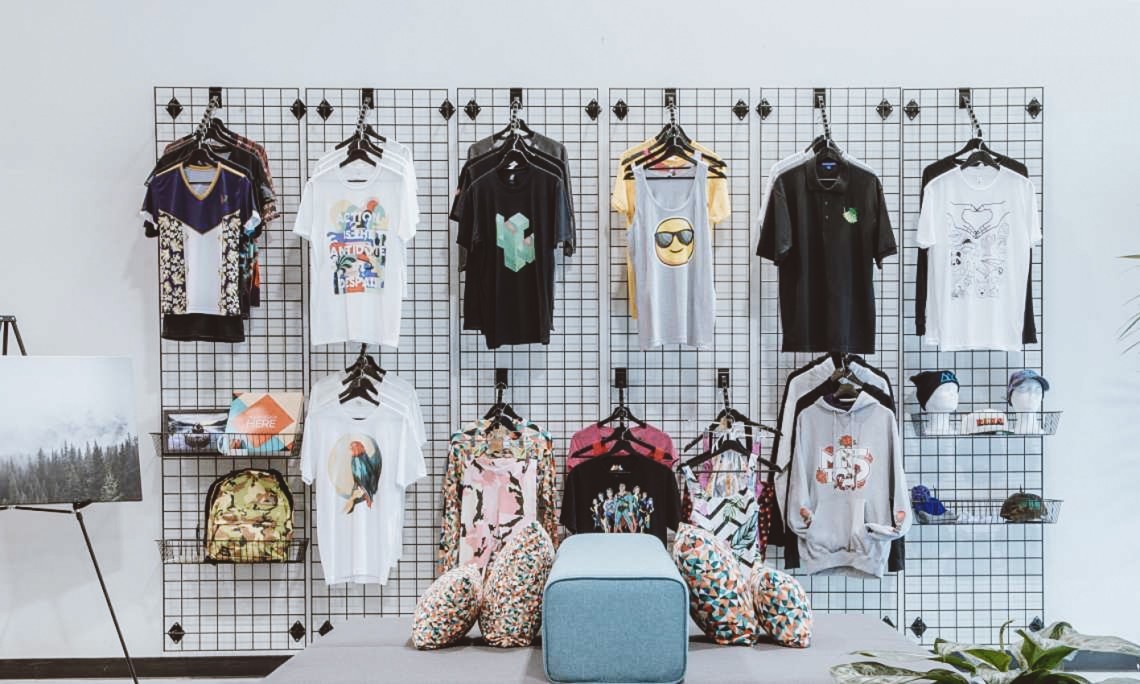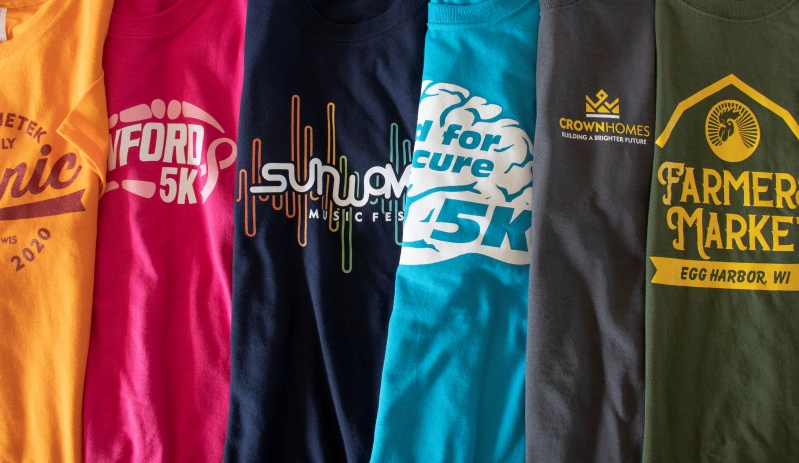Tx Tees Things To Know Before You Buy
How Tx Tees can Save You Time, Stress, and Money.
Table of ContentsTx Tees for BeginnersThe 2-Minute Rule for Tx TeesTx Tees Can Be Fun For EveryoneNot known Details About Tx Tees Tx Tees - TruthsFacts About Tx Tees UncoveredWhat Does Tx Tees Do?
That brings your overall to around $1,900 gross and delivery. Build up various other expenses, like the number of utilities it takes to run the store and the expense of ink and emulsion per style. screen printing shop. Take the print below for instance. This is a one-color image, so the cost of ink per tee shirt is about 20 cents.The emulsion needs to only be a few cents considering that you 'd just need to coat one screen for this job. Normally, printers try to make up to 45% revenue on a print task.

With DTF, you can publish a handful of t shirts, or just one. Use the same calculator as the area above to calculate exactly how much profit you 'd make utilizing DTF transfers. Compare the prices and profits to whichever technique speaks best to your arrangement and procedure. Both screen printing and DTF have their niches in the globe.
The Tx Tees Ideas
The best means to know? Ask around and see what print stores like yours are doing. custom monograming. Try both out and see which you like better
When you're selecting what kind of printing approach to make use of for printing your artwork styles on your garments, it's important that you know the differences between these 2 strategies so you can take full advantage of outcomes while reducing expenses. Display printing is one of the most frequently utilized method for publishing styles on fabrics.
DTG printing is also called area or direct to garment printing because it publishes just what is required rather than making a display as screen printers do. https://forums.hostsearch.com/member.php?258490-txtees02&tab=aboutme&simple=1. Screen printing functions by screen filler squeegee display printing ink screen mesh display, then moving the image to garment using warm and/or pressure
The DTG printer utilizes special dye-sublimation inks that are applied right into a pre-designed image by an electronic printing system. The inks end up being component of the fabric, permitting dynamic shades and exceptional detail. It's additionally referred to as place or direct to garment printing because it publishes only what is required rather of making a screen as display printers do.
Getting The Tx Tees To Work
It's much quicker - you can publish a fullcolor picture in minutes, as opposed to hours for screen printing. Second, there's no set up time or costs entailed - you can print any type of design you like, without having to develop a screen. Third, there's no waste - due to the fact that screen printers display print one layout each time, they have to evaluate each shade independently.
The paper is very costly and can just be used once. Once it's printed on, it has actually to be discarded. - The initial purchase cost is less than the ahead of time financial investment of DTG printers- You can print multi-color layouts one screen each time rather than having to print each color individually like DTG printing.

3 Easy Facts About Tx Tees Described
Rather of utilizing display mesh as display printers do, color sublimation printers use laser technology to move your photos onto garments or paper. A heat process moves the dye from its solid-state straight right into the gas phase which in turn merges it onto material substratums when they are rapidly heated to heats under high pressure.
Sublimation printing is green. It uses less water than screenprinting, and due to the fact that it does not include using unsafe solvents, it's safe for all kinds of apparel. The color sublimation inks are also odor-free when healed, unlike display printers that make use of unsafe chemicals during the screen printing process that leave behind an unpleasant smell.
They additionally conserve cash on pricey devices like direct exposure devices since color sublimation printers do not call for a UV direct exposure unit or a flash treatment oven that is commonly used in screen printing (custom cap printing). What is direct to garment printing (DTG Printing)? DTG printing is a digital screenprinting process that publishes straight onto textile making use of specialized inkjet printers
Not known Facts About Tx Tees
DTG printing supplies lots of benefits over traditional screenprinting, consisting of the capacity to print photographic top quality pictures, higher shade vibrancy, and the capacity to print layouts on darker materials. DTG printers function by heating the fabric ink up until it becomes a gas. The gas then penetrates the fabric, bonding with the fibers to develop a long-term print.

Display printers just prepare their display then start printing until they run out of item or ink.- There is a large range of skilled screen printers all over the globe, which can be helpful for novices. - It's a slower procedure - screen printers frequently have to await the ink to completely dry prior to they can publish the next color- Display printers call for hands-on labor, so there's a higher knowing curve and it takes longer to generate a top quality design- Display printing isn't as exact as DTG printing, so you might get some "blood loss" of shades from one component of the picture onto one more if not done effectively.
Tx Tees Fundamentals Explained
Nonetheless, as opposed to using display mesh as screen printers do, color sublimation printers make use of laser innovation to move your pictures onto garments or paper. A warm procedure moves the dye from its solid-state straight right into the gas phase which subsequently fuses it onto textile substrates when they are quickly warmed to high temperatures under high stress.
Sublimation printing is eco-friendly. It utilizes much less water than screenprinting, and since it does not entail the use of dangerous solvents, it's safe for all types of garments. The color sublimation inks are also odor free when cured, unlike display printers that make use of hazardous chemicals during the display printing process that leave an undesirable odor.
They also save money on expensive equipment like exposure systems considering that color sublimation printers do not call for a UV direct exposure unit or a flash cure oven that is normally made use of in display printing. What is straight to garment printing (DTG Printing)? DTG printing is an electronic screenprinting procedure that publishes straight onto material making use of specialized inkjet printers.
Excitement About Tx Tees
DTG printing uses lots of advantages over standard screenprinting, including the ability to publish photo top quality photos, higher color vibrancy, and the ability to publish styles on darker textiles. DTG printers work by warming the fabric ink up until it turns right into a gas. The gas after that penetrates the fabric, bonding with the fibers to develop an irreversible print.